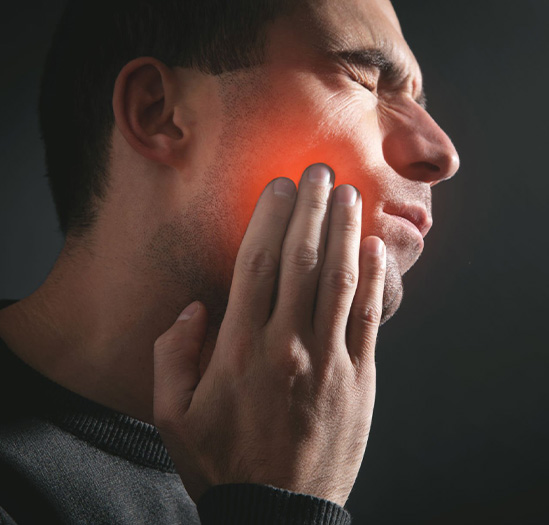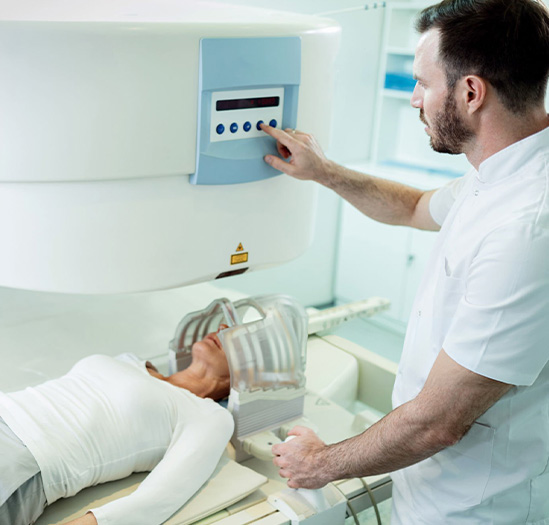
What is trigeminal neuralgia?
Trigeminal neuralgia (TN), or tic douloureux, causes severe, stabbing facial pain, affecting mainly one side of the face along the trigeminal nerve's branches to the eye, cheek, and jaw. Described as one of the most excruciating pains, it can be triggered by minor actions like brushing teeth or exposure to wind, leading to electric shock-like sensations. The condition may worsen over time, but treatments like anticonvulsive medications and surgery offer relief for debilitating symptoms, aiming to improve quality of life.
What are the causes of Trigeminal Neuralgia?
Trigeminal neuralgia (TN), often occurring spontaneously, can be linked to vascular compression where a blood vessel presses against the trigeminal nerve, causing severe pain. This compression can wear away the nerve's protective myelin sheath, making it hypersensitive. Both primary TN, due to nerve compression, and secondary TN, caused by other medical conditions like multiple sclerosis or tumours, lead to intense facial pain. Misdiagnosis with dental issues is common, prompting unnecessary procedures in the search for relief.


What are the symptoms of Trigeminal Neuralgia Symptoms?
Trigeminal neuralgia, more common in women and the elderly, primarily affects the face with sharp, shock-like pain, often mistaken for dental issues. Symptoms, triggered by mundane activities like eating or facial touch, lead to intense pain episodes, followed by anxiety-ridden pain-free periods. Misattributed to dental problems initially, the disorder is categorized into Type 1 (acute pain) and Type 2 (constant aching), with cycles of exacerbation and remission, causing significant distress and impacting daily life.
Patients who suffer from trigeminal neuralgia typically experience a sensation of electrical shocks that results in an excruciating stabbing pain in less than 20 seconds. The pain can be focused in one spot or can spread throughout the face. Typically, it affects only one side of the face, but in rare cases and sometimes when associated with multiple sclerosis, patients may feel pain on both sides of their face. The areas affected by the pain include the cheeks, jaw, teeth, gums, lips, eyes, and forehead. Trigeminal neuralgia attacks may be triggered by various activities such as lightly touching the skin, washing, shaving, brushing teeth, blowing the nose, drinking hot or cold beverages, encountering a light breeze, applying makeup, smiling, or talking.
Detail the points of Trigeminal Neuralgia Pain.
The trigeminal nerve, a crucial cranial nerve, provides facial sensation, with one nerve on each side of the head, branching into three parts: the ophthalmic, maxillary, and mandibular nerves. These branches control sensations in specific facial areas, including the eyes, upper and lower eyelids, cheeks, nostrils, lips, gums, and jaw, playing a key role in facial perception and motor functions related to chewing. The term "trigeminal" reflects its three-part division, essential for transmitting sensory information from the face to the brain.


Detail the diagnosis of Trigeminal Neuralgia.
Diagnosing trigeminal neuralgia (TN) involves physical exams and medical history to exclude other facial pain causes. Healthcare providers assess pain characteristics and triggers, often using imaging tests like MRI to identify nerve compression or abnormalities. Despite its diagnostic challenges, due to symptoms mimicking other conditions, early medical consultation is crucial for accurate diagnosis and effective management.
Detail the Radiofrequency Ablation treatment for Trigeminal Neuralgia.
Radiofrequency ablation (RFA) is a minimally invasive procedure that targets the trigeminal nerve, offering significant relief for sufferers of trigeminal neuralgia. The process involves inserting a needle-like electrode into the skin to reach the nerve pathway, where a controlled radiofrequency current is applied to damage the problematic nerve fibres and disrupt pain signals to the brain. RFA is known for its effectiveness, providing long-lasting pain relief with a relatively low risk of complications. The procedure is typically quick, done on an outpatient basis, and requires minimal recovery time, making it an attractive option for many patients. It has become a preferred method for its ability to precisely target the affected nerve pathways while preserving overall nerve function.


How to care for a loved one with Trigeminal Neuralgia.
While trigeminal neuralgia (TN) is not life-threatening, it significantly impacts quality of life due to severe pain and anxiety. Effective care involves understanding the condition's severity, ensuring medication adherence, facilitating medical consultations, and exploring alternative treatments. Supportive care enhances treatment success, underscoring the need for compassionate healthcare collaboration to optimize management strategies for those affected.

